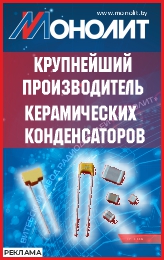SCANNING CAPILLARY MICROSCOPY AS A TOOL FOR NANOCAPILLARY PRINTING DOI: https://doi.org/10.22184/1993-8578.2024.17.7-8.418.425
Controlled manipulation of cultured cells and local delivery of macromolecules and substances are still unsolved problems in experimental biology. Intracellular injection of various therapeutic agents, including biologics and supramolecular agents, is difficult due to natural biological barriers required to protect the cell. Efficient delivery of nucleic acids, proteins, peptides and nanoparticles is critical for clinical implementation of new technologies that can benefit the treatment of diseases using gene and cell therapy. Using a capillary, it is possible to locally apply a desired substance to a cell or even introduce it into the cell, and then evaluate its effect on morphology using scanning capillary microscopy (SCM) tools. These capabilities make the capillary microscopy method promising for biomedical purposes.
FLUORESCENCE OPTICAL NANOTOMOGRAPHY: COMBINING THE TECHNIQUES OF TOTAL INTERNAL REFLECTION FLUORESCENCE MICROSCOPY AND ULTRAMICROTOMY DOI: https://doi.org/10.22184/1993-8578.2024.17.7-8.428.433
A method of 3D-TIRF microscopy is proposed, based on combination of ultramicrotomy and total internal reflection fluorescence microscopy techniques of the sample surface after cutting, which allows reconstructing the three-dimensional ultrastructure of objects.
DIRECT VISUALIZATION OF EXTRACELLULAR VESICLES ON THE MEMBRANE OF HUMAN MESENCHYMAL STEM/STROMAL CELLS BY CRYO-ELECTRON MICROSCOPY | DOI: https://doi.org/10.22184/1993-8578.2024.17.7-8.434.443
Extracellular vesicles (EVs) play an important role in intercellular communication and influence a wide range of physiological and pathological processes. Membrane-associated extracellular vesicles (MAVs) represent a distinct and poorly understood class of EVs. This study demonstrates the application of cryo-electron microscopy (cryo-EM) to investigate MAVs secreted by human mesenchymal stem/stromal cells (MSCs). Cryo-EM revealed vesicles ranging in diameter from 50 to 750 nm located near the cell surface. The results obtained will facilitate further studies on the physiological role of MAVs and their association with cell membranes.
DEVELOPMENT OF MULTILAYER METAL FILMS FOR STUDYING THE CHIRAL SPIN STRUCTURES DYNAMICS DOI: https://doi.org/10.22184/1993-8578.2024.17.7-8.444.453
Using magnetron sputtering, contact and photolithography installations, thin-film structures with conductive contacts of different profiles based on metal nanostructures of the heavy metal-ferromagnet type were manufactured. The parameters of the effective magnetization reversal and the magnitude of the current-induced field were determined from the magnetization and spin Hall effect measurements. The current-induced dynamics of skyrmions for ferro- and ferrimagnetic layers was simulated. The results of the work are of interest for studying spin-transport effects and developing methods for controlling spin textures in multilayer films, promising for creating new electronic elements.
STABILITY OF PROPERTIES AND DEGRADATION MECHANISMS OF MULTILAYER TRANSPARENT CONDUCTIVE STRUCTURES DURING THEIR "DAMP HEAT" TESTING DOI: https://doi.org/10.22184/1993-8578.2024.17.6.338.344
INFLUENCE OF PLASTIC DEFORMATION ON STRUCTURE AND PROPERTIES OF BIORESORBABLE ZINC ALLOY Zn-0.8Li-0.1Mn This paper presents the results of a study of the effect of plastic deformation on the structure and properties of zinc alloy Zn-0.8Li-0.1Mn. The evolution of the structure has been characterised by scanning electron microscopy (SEM) and EBSD methods. The stress-relative elongation diagrams obtained under uniaxial tension are discussed.
OPTIMIZATION OF A LOGIC OPTICAL GATE ON A Y-SHAPED WAVEGUIDE COMBINER DOI: https://doi.org/10.22184/1993-8578.2024.17.7-8.454.462
Optical logic gates are promising components for building photonic circuits that perform logic operations and calculations. A study was carried out using the method of finite differences in the time domain (FDTD) of a logic valve based on a Y-shaped waveguide adder that performs the functions NOT, OR, exclusive OR. Based on the results of the study, the configuration of the Y-shaped adder was optimized, which provides an attenuation coefficient (contrast) of the order of 35.4 dB between logical "1" and "0" with a signal transmission delay time to the output port of 0.33 ps. The possibility of implementing a cascade scheme for the NAND function with a contrast ratio of about 34 dB and a transmission time delay of 0.73 ps is considered. The proposed design of the logic gate can potentially be used in the development of photonic circuits on a chip to increase their speed and efficiency.
DESIGN OF A CELL FOR STUDYING DOMAIN FORMATION PROCESSES IN CONJUGATED DONOR-ACCEPTOR SYSTEMS AT A GIVEN TEMPERATURE GRADIENT DOI: https://doi.org/10.22184/1993-8578.2024.17.7-8.464.475
The actively developing field of organic semiconductor electronics requires not only development of new conjugated donor-acceptor compounds, but also the creation of new methods of sample preparation at the stage of creating devices based on them. It is known that improving the mutual packing of molecules can significantly increase the efficiency of devices. In this paper, a cell was proposed that allows creating a thermal gradient in the process of structure formation, allowing the study of structures obtained at different annealing temperatures within a single experiment. Using the example of an organic compound with an irreversible phase transition, the processes occurring during such annealing were studied using atomic force microscopy, X-ray structural analysis with a sliding beam, and polarization optical microscopy.
THREE-DIMENSIONAL VISUALIZATION OF VIRUSES, BACTERIA AND CELLS IN THE EDUCATIONAL PROCESS DOI: https://doi.org/10.22184/1993-8578.2024.17.7-8.476.481
Scanning probe microscopy has proven itself as a unique device for solving problems in the field of virology, cell biology, biomedicine, regenerative medicine, materials science and microelectronics. This data can be used in scientific research, for teachers of natural sciences at school it is useful to expand the horizon of the educational program and show schoolchildren not only the world in an optical microscope or in formulas on the board. Atoms, molecules, proteins, viruses, bacteria and cells can be seen or even touched with an atomic force microscope, and this is a look at nanoobjects from a completely different angle.

 rus
rus TS_pub
TS_pub technospheramag
technospheramag technospheramag
technospheramag ТЕХНОСФЕРА_РИЦ
ТЕХНОСФЕРА_РИЦ


